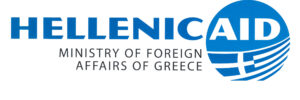The European Commission has adopted a Communication on “building sustainable international partnerships as a Team Europe” taking stock of the progress achieved in the field of International Partnerships. Over the past five years, EU has revamped its model of cooperation in response to the evolving geopolitical and geoeconomic landscape and global challenges, notably the growing gap to achieve the Sustainable Development Goals. The EU has moved away from donor-recipient dynamics towards mutually beneficial partnerships, which bring benefits to the local populations and strengthen resilience at home and abroad. This approach was embodied in the Global Gateway investment strategy launched in 2021. By investing in partnerships, the EU seeks to position itself in an increasingly contested international environment.
Amidst the COVID-19 pandemic, the European Union institutions, EU Member States, and European development financial institutions first pushed for joint responses in a Team Europe spirit, which has since become an integral part of the EU’s external action toolbox allowing the EU to increase the scale, impact, and visibility of its actions. Bringing on board also the private sector, Team Europe approach has been the main delivery mechanism of the EU’s Global Gateway investment strategy.
Global Gateway is expected to mobilise up to €300 billion is sustainable public and private investments by the year 2027. Between 2021-2023, €179 billion in investments have been mobilised in in our partner countries across the world, advancing 225 flagship projects. Out of these, €50 billion were supported by the European Commission and €129 billion were mobilised by EU Member States, the EIB and the EBRD. The Global Gateway strategy focuses on five priority areas, each backed by concrete projects across various regions: Climate & Energy, Digital Transition, Transport Connectivity, Health and Education & Research.
The Communication also recounts the EU’s engagement in fragile contexts and countries, where the primary objective is to address root causes of fragility and support the basic needs and livelihoods of populations, along the Humanitarian-Development-Peace nexus.
The EU has scaled up work to provide a comprehensive response to address root causes of migration. The external dimension is an essential component of the Pact on Migration and Asylum, and in line with the Pact, the EU has increased engagement with countries of origin and transit.
Another key achievement is the Samoa Agreement, signed in November 2023, with African, Caribbean, and Pacific States to strengthen the EU’s cooperation with these regions. This agreement helps the EU to maintain its role as a champion for youth, equality, gender, and human rights.
